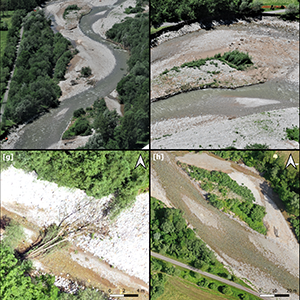Best practices in post-flood surveys: The study case of Pioverna torrent

Published:28 June 2022
Abstract Views: 2561
PDF: 452
HTML: 37
HTML: 37
Publisher's note
All claims expressed in this article are solely those of the authors and do not necessarily represent those of their affiliated organizations, or those of the publisher, the editors and the reviewers. Any product that may be evaluated in this article or claim that may be made by its manufacturer is not guaranteed or endorsed by the publisher.
All claims expressed in this article are solely those of the authors and do not necessarily represent those of their affiliated organizations, or those of the publisher, the editors and the reviewers. Any product that may be evaluated in this article or claim that may be made by its manufacturer is not guaranteed or endorsed by the publisher.
Similar Articles
- Volodymyr Bulgakov, Valerii Adamchuk, Ladislav Nozdrovicky, Ivan Holovach, Theory of the interaction of flat sensing organ with the head of the sugar beet root , Journal of Agricultural Engineering: Vol. 48 No. 4 (2017)
- Salvatore Praticò, Raimondo Tripodi, Viviana Tirella, Salvatore Di Fazio, Francesco Barreca, Giuseppe Modica, Proposal of an integrated 3D architectural survey method for application in historic agri-food building analysis and representation , Journal of Agricultural Engineering: Vol. 54 No. 3 (2023)
- Eliseo Roma, Pietro Catania, Mariangela Vallone, Santo Orlando, Unmanned aerial vehicle and proximal sensing of vegetation indices in olive tree (Olea europaea) , Journal of Agricultural Engineering: Vol. 54 No. 3 (2023)
- Volodymyr Bulgakov, Simone Pascuzzi, Semjons Ivanovs, Volodymyr Kuvachov, Yulia Postol, Francesco Santoro, Viktor Melnyk, Study of the steering of a wide span vehicle controlled by a local positioning system , Journal of Agricultural Engineering: Vol. 52 No. 3 (2021)
- Johnny Moretto, Emanuel Rigon, Luca Mao, Lorenzo Picco, Fabio Delai, Mario Aristide Lenzi, Medium- and short-term channel and island evolution in a disturbed gravel bed river (Brenta River, Italy) , Journal of Agricultural Engineering: Vol. 43 No. 4 (2012)
- Giuseppe Modica, Francesco Solano, Angelo Merlino, Salvatore Di Fazio, Francesco Barreca, Luigi Laudari, Carmelo Riccardo Fichera, Using Landsat 8 imagery in detecting cork oak (Quercus suber L.) woodlands: a case study in Calabria (Italy) , Journal of Agricultural Engineering: Vol. 47 No. 4 (2016)
- Lorenzo Picco, Alessia Tonon, Riccardo Rainato, Mario Aristide Lenzi, Bank erosion and large wood recruitment along a gravel bed river , Journal of Agricultural Engineering: Vol. 47 No. 2 (2016)
- Marko Milan Kostić, Nataša Ljubičić, Vladimir Aćin, Milan Mirosavljević, Maša Budjen, Miloš Rajković, Nebojša Dedović, An active-optical reflectance sensor in-field testing for the prediction of winter wheat harvest metrics , Journal of Agricultural Engineering: Vol. 55 No. 1 (2024)
- Kamalesh Kanna S, Kumaraperumal Ramalingam, Pazhanivelan P, Jagadeeswaran R, Prabu P.C., YOLO deep learning algorithm for object detection in agriculture: a review , Journal of Agricultural Engineering: Vol. 55 No. 4 (2024)
- Zhongkuan Wang, Sheng Wen, Yubin Lan, Yue Liu, Yingying Dong, Variable-rate spray system for unmanned aerial applications using lag compensation algorithm and pulse width modulation spray technology , Journal of Agricultural Engineering: Vol. 55 No. 1 (2024)
You may also start an advanced similarity search for this article.

 https://doi.org/10.4081/jae.2022.1312
https://doi.org/10.4081/jae.2022.1312 











